Recently, in response to World Environment Day on June 5, SCG Petrochemicals Public Company Limited (SCGC) and its member Long Son Petrochemicals Company Limited (LSP) held a handover ceremony of the "Source Waste Classification Model - School Model" for two schools with the aim of continuing to maintain and spread the habit of waste classification to students and local residents.
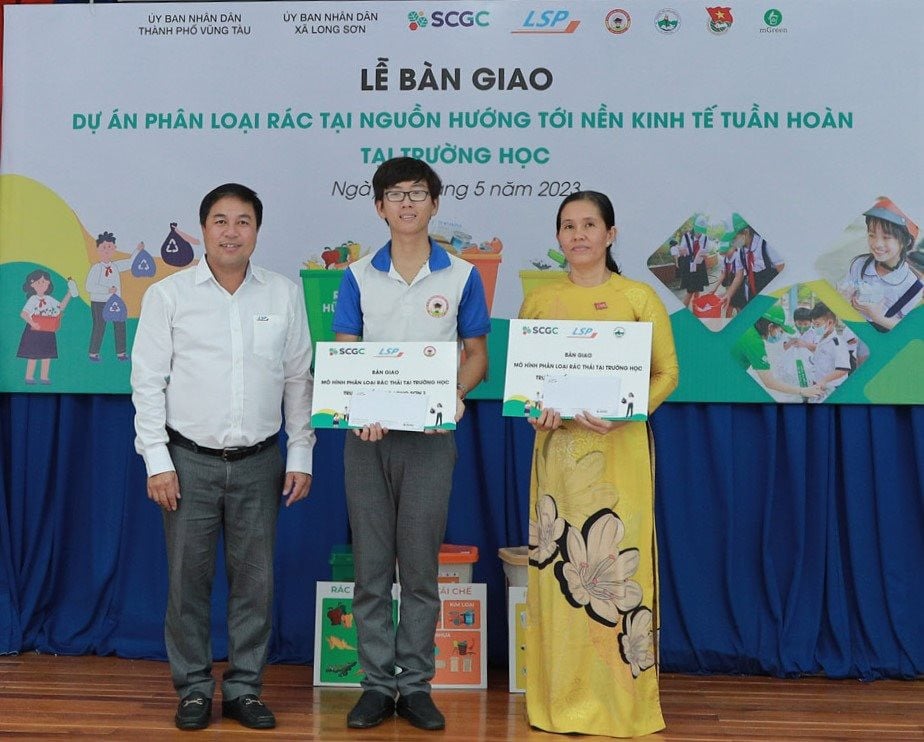
The waste classification model at source - School model is an activity under SCGC's commitment within the Public Private Partnership (PPC) framework that SCGC has signed with the Ministry of Natural Resources and Environment, Dow Vietnam and Unilever Vietnam to build a circular economy in plastic waste management in Vietnam, is one of the activities demonstrating the Company's community responsibility in the factory area with a commitment to business operations in the direction of sustainable development focusing on the environment, society and transparent governance.
The project was piloted at Long Son 1 and Long Son 2 Primary Schools from 2020 to educate students about waste classification and encourage them to classify waste at school and at home. The program also called for support from families and schools to create a foundation for replicating the waste classification model in the community.
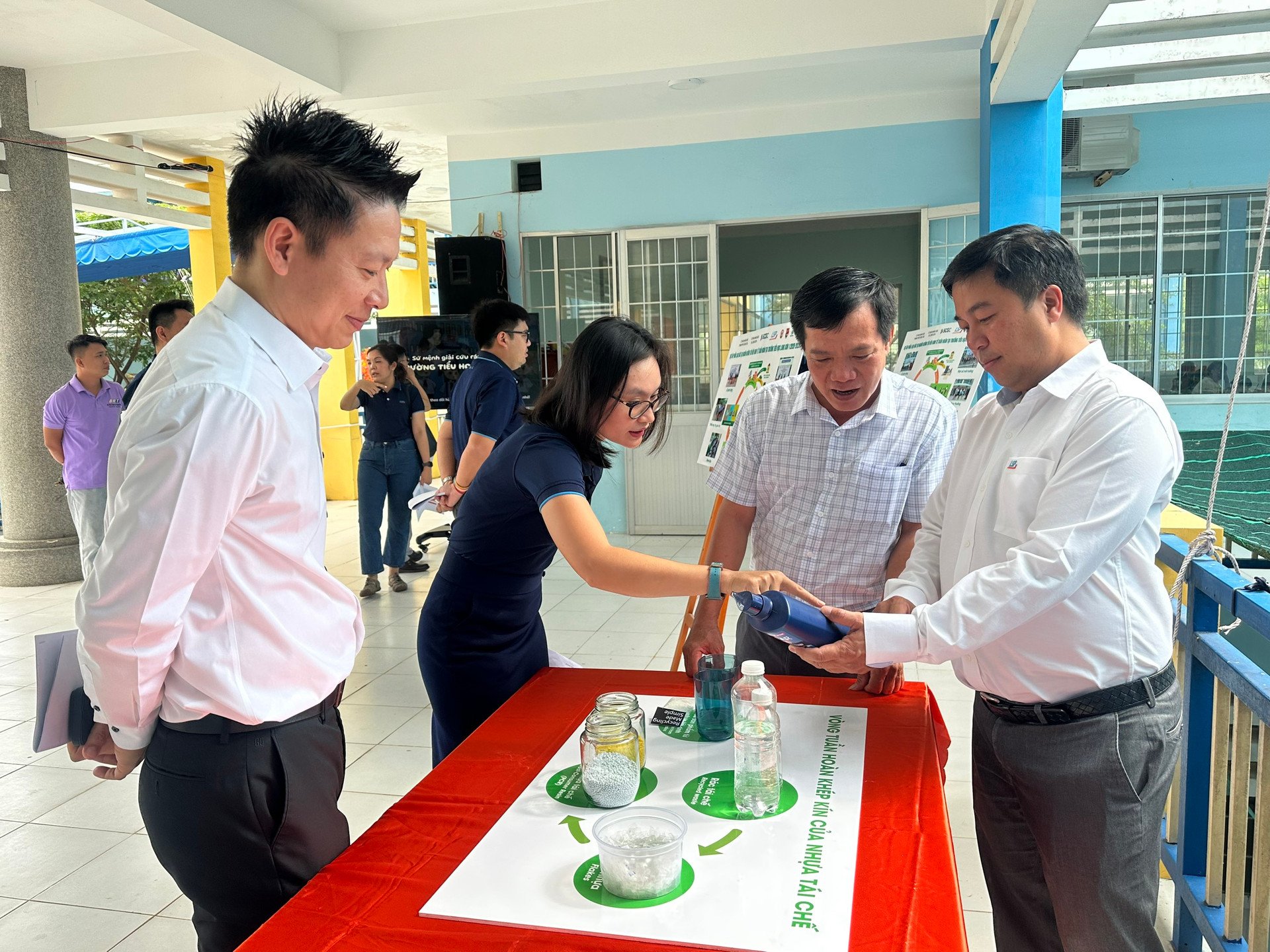
Accordingly, instead of throwing garbage into one bin as before, students and teachers of Long Son 1 and Long Son 2 Primary Schools have developed the habit of sorting garbage before putting it into 3 separate bins with 3 different colors. Vegetables, tubers, and fruits in leftover food are put in the green bin (organic waste). Cardboard, paper, newspapers, plastic boxes, and iron cans are put in the orange bin (recyclable waste). Other types of waste are put in the yellow bin. This is a good habit formed since the project "Waste classification at source towards a circular economy" was implemented at the school.
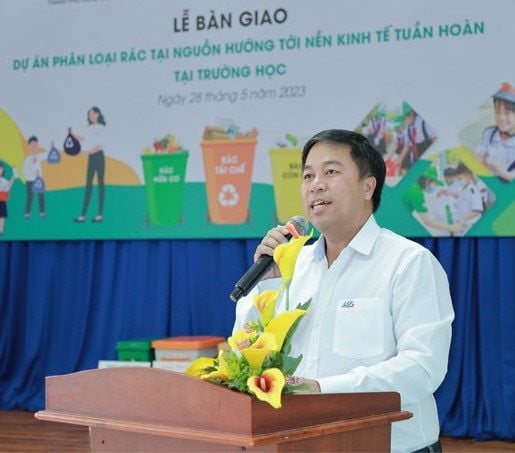
Speaking at the handover ceremony, Director of Trial Preparation - Downstream Workshop of LSP Noppon Summaprasit shared: The handover ceremony is not the end of the project, but an important step in implementing sustainable waste classification at the two schools. The achievements of the waste classification project over the past 2 years show that waste is not only valuable when classified properly, but with small actions of each individual in waste classification, we can together create a sustainable future for both the country and the world.
The project has received the active participation of nearly 2,700 students and 120 teachers who participated in training and classified waste generated at schools and at home; collected more than 2,000 kg of recyclable waste through the Green Day program - exchanging recyclable waste for gifts.
Source



![[Photo] Prime Minister Pham Minh Chinh receives Swedish Minister of International Development Cooperation and Foreign Trade](https://vphoto.vietnam.vn/thumb/1200x675/vietnam/resource/IMAGE/2025/5/12/ae50d0bb57584fd1bbe1cd77d9ad6d97)
![[Photo] Prime Minister Pham Minh Chinh works with the Standing Committee of Thai Binh Provincial Party Committee](https://vphoto.vietnam.vn/thumb/1200x675/vietnam/resource/IMAGE/2025/5/12/f514ab990c544e05a446f77bba59c7d1)

![[Photo] Prime Minister Pham Minh Chinh starts construction of vital highway through Thai Binh and Nam Dinh](https://vphoto.vietnam.vn/thumb/1200x675/vietnam/resource/IMAGE/2025/5/12/52d98584ccea4c8dbf7c7f7484433af5)

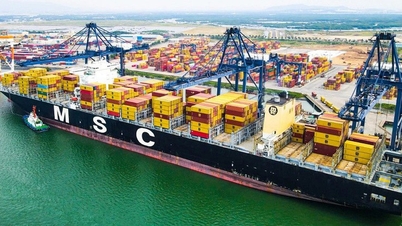



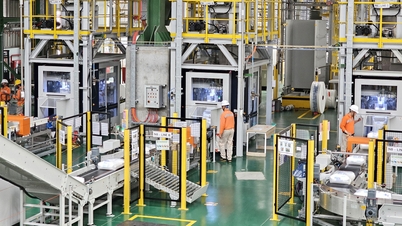





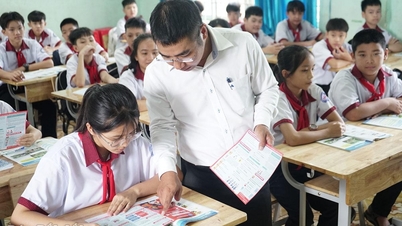
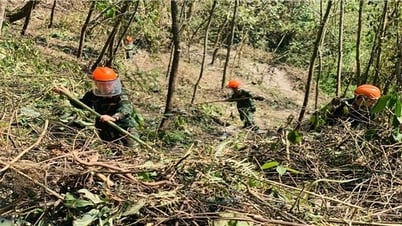
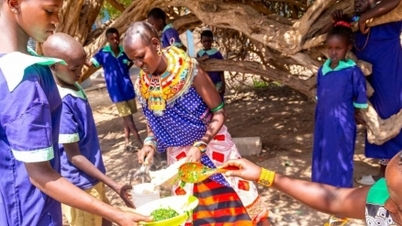
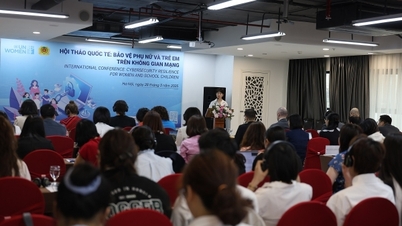




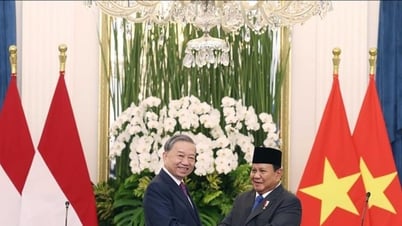
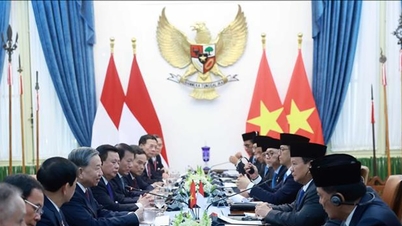
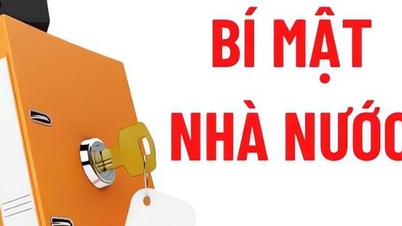
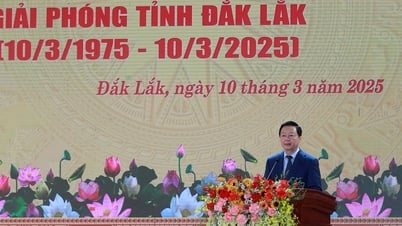
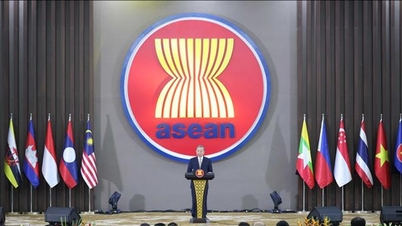
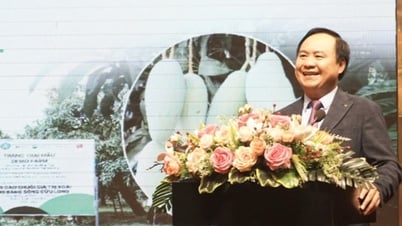

















































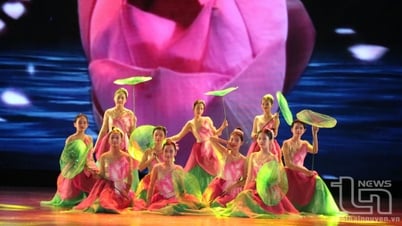

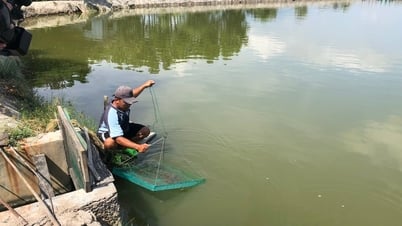

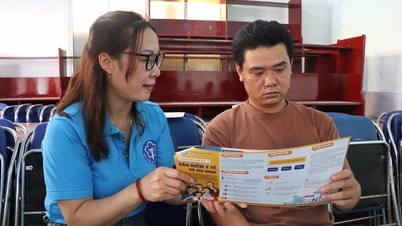
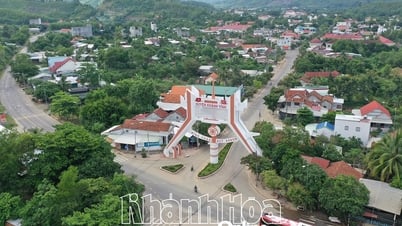










Comment (0)